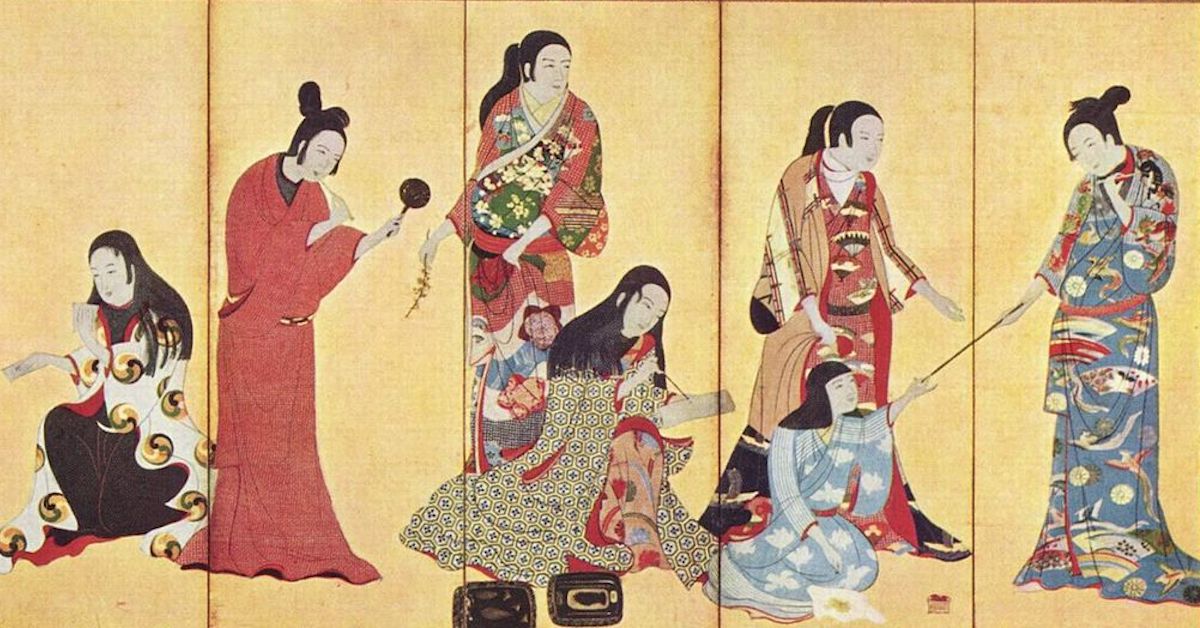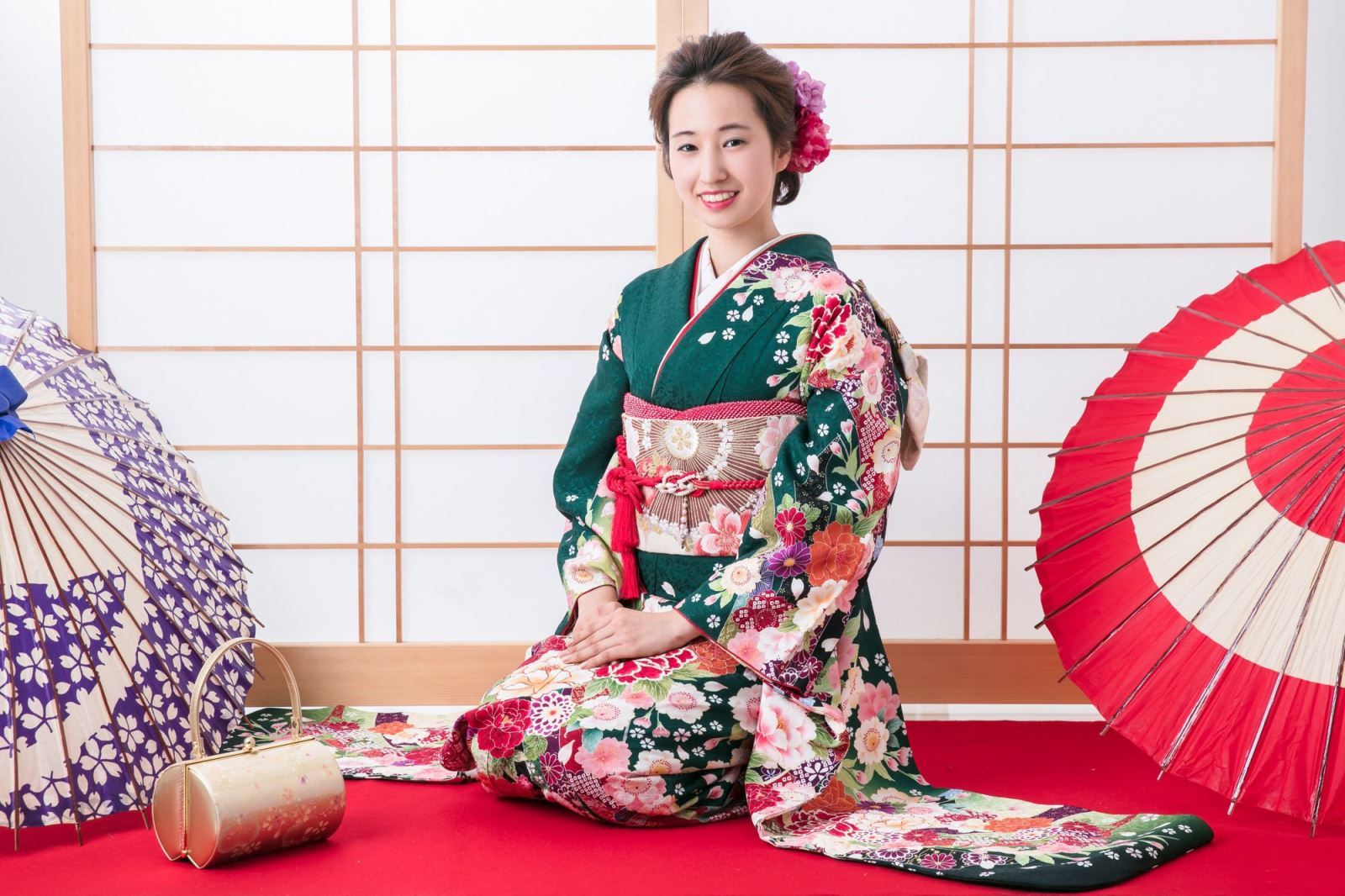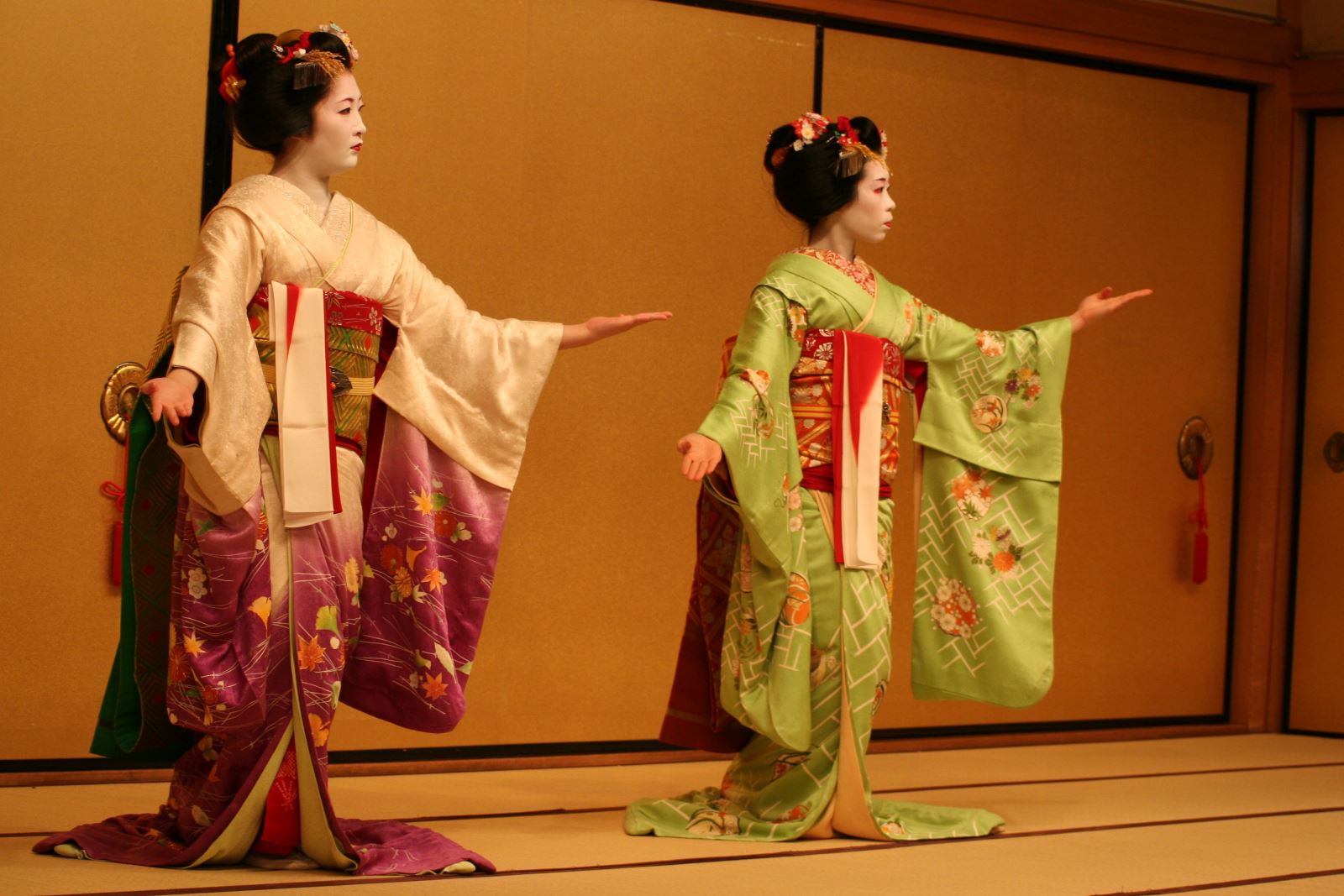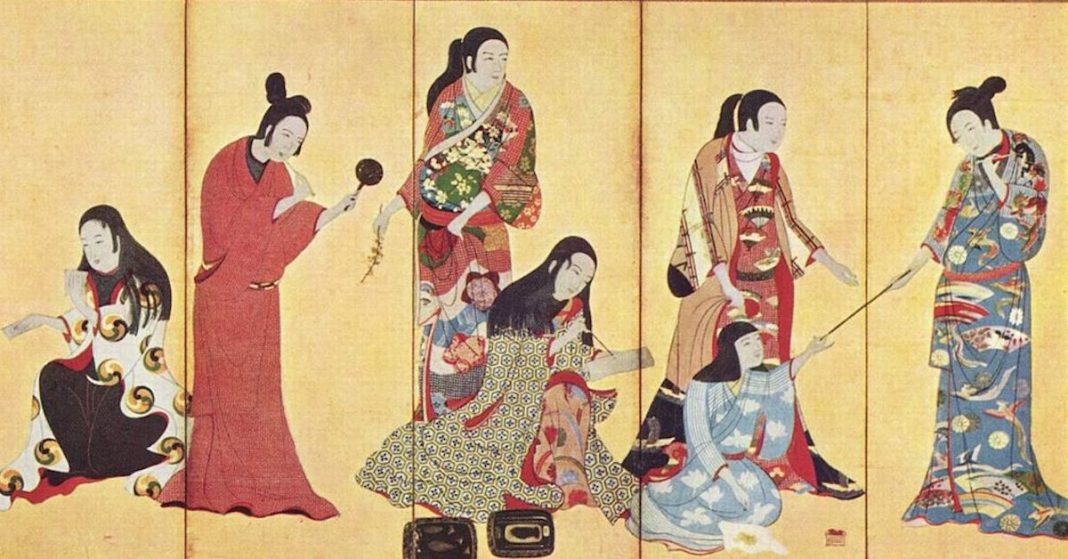
The kimono (きもの/着物) (lit., “thing to wear” – from the verb ki ((着)), “to wear (on the shoulders)” and the noun mono ((物)), “thing”) is a traditional Japanese garment and the national dress of Japan. The kimono is a T-shaped, wrapped-front garment with square sleeves and a rectangular body, and is worn with the left side wrapped over the right side, unless the wearer is deceased. The kimono is traditionally worn with an obi, and is commonly worn with accessories such as zōri sandals and tabi socks.

Kimono that we know today came into being during the Heian Period (794-1192). Japanese Kimono is always used in important festivals or formal moments, it is the representative of polite and very formal clothing. Over time, as the practice of wearing kimonos in layers came into fashion, Japanese people began paying attention to how kimonos of different colors looked together, and they developed a heightened sensitivity to color. Typically, color combinations represented either seasonal colors or the political class to which one belonged.

Kimono is made from a wide variety of fiber types, including hemp, linen, silk, crepe (known as chirimen), and figured satin weaves such as rinzu. Formal kimono are almost always made from silk, with thicker, heavier, stiff or matte fabrics generally being considered informal.
Following the opening of Japan’s borders in the early Meiji period to Western trade, a number of materials and techniques – such as wool and the use of synthetic dyestuffs – became popular, with casual wool kimono being relatively common in pre-1960s Japan; the use of safflower dye (‘beni’) for silk linings fabrics (known as ‘momi’; literally, “red silk”) was also common in pre-1960s Japan, making kimono from this era easily identifiable.

Modern kimono are widely available in fabrics considered easier to care for, such as polyester. Kimono linings are typically silk or imitation silk, and generally match the top fabric in fibre type, though the lining of some casual silk kimono may be cotton, wool or linen.
In modern Japan, the kimono is uncommonly worn as an everyday dress and has steadily fallen out of fashion as the most common garment for a Japanese person to own and wear. Kimono are now most frequently seen at summer festivals, where people frequently wear the yukata, the most informal type of kimono. However, the kimono is also worn to funerals, weddings and other formal events.
According to en.wikipedia and kyotokimono-rental.com















